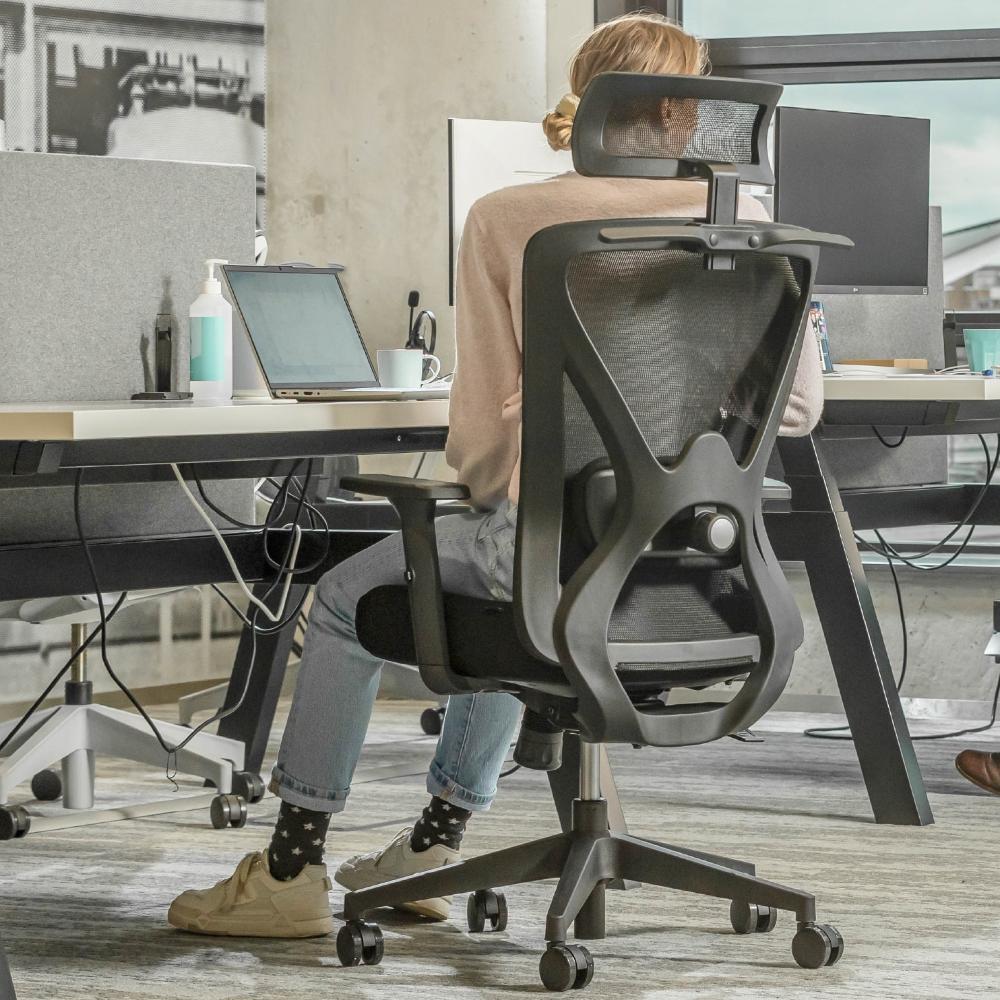How Long Should You Stand at a Sit-Stand Desk? Find the Perfect Balance
Share
Introduction
The introduction of the sit-stand desk has changed the way we work. By alternating between sitting and standing, you can improve your health and work more productively. But how long should you actually stand? And what is the right balance? In this guide, you will discover everything you need to know to make optimal use of your sit-stand desk, with handy solutions from Backerz.
The Benefits of Standing Work
Prolonged sitting is often associated with health problems such as back pain, poor blood circulation, and an increased risk of heart disease. By standing regularly during your workday, you stimulate blood circulation, improve your posture, and can even boost your energy levels. Standing work also promotes greater mental alertness, allowing you to concentrate better and work more efficiently.
How Long Should You Stand?
Although standing work offers advantages, standing too much is not ideal either. Ergonomics specialists recommend gradually building up standing work. Start with 15 to 30 minutes of standing per hour of work, and slowly increase this based on your comfort level. Ultimately, many experts aim for a ratio of about 1 hour sitting followed by 15 minutes standing.
It is important that you listen to your body. Fatigue in your legs or lower back is a signal to sit down again for a while. The goal is to naturally integrate movement and posture changes into your workday, without forcing it.
Best Practices for Using a Sit-Stand Desk
An ergonomic desk that is easily adjustable makes a big difference. With the Backerz Sit-Stand Desk Electric, you can smoothly switch between sitting and standing with the push of a button. This prevents your posture from being set incorrectly, which often happens with manually adjustable desks.
In addition to a quality desk, your seating option is also important. Vary your sitting position by using dynamic aids such as the sitting ball, the ergonomic Motion Mesh Office Chair, or a wobble stool. These products encourage small movements that keep your muscles active, even while you are sitting.
Setting the Correct Working Height
A good working height is essential for comfort and ergonomics. When standing, your elbows should be at a 90-degree angle when typing, and the computer screen should be at eye level. The same principle applies when sitting: feet flat on the floor, knees at a right angle.
For a more detailed explanation of ergonomic dimensions, you can consult our article on standard desk dimensions.
Common Mistakes in Standing Work
Even with the best intentions, many users make mistakes when implementing their sit-stand desk. Standing for too long without breaks can lead to tired legs and lower back pain. Also, not correctly adjusting the height of the desk or the screen can cause neck and shoulder complaints.
Another common pitfall is thinking that just standing is enough. Variation and movement remain essential. Always combine standing work with micro-movements, short walks, and stretching to get the maximum benefit from your sit-stand desk.
Make your Workplace a Smart Workplace
Even in smaller workspaces, you can fully benefit from ergonomic solutions. In our guide on sit-stand desks for small spaces, you will discover practical tips to set up your workspace flexibly and healthily.
Conclusion
The key to successfully working with a sit-stand desk is balance. By regularly alternating between sitting, standing, and moving, you protect your health and increase your productivity. Quality tools such as the Backerz Sit-Stand Desk Electric, a sit ball or wobble stool help you effortlessly integrate this balance into your daily routine.
Frequently Asked Questions
How many hours per day should I stand at my sit-stand desk?
Ideally, you stand for about 1-2 hours spread throughout the day, in blocks of 15-30 minutes at a time.
Can standing too much be harmful?
Yes, standing for too long without breaks can lead to physical complaints. Variation remains crucial.
Is an electrically adjustable desk really necessary?
An electric sit-stand desk like the Backerz Sit-Stand Desk Electric allows for effortless switching and optimal ergonomics, which reduces the risk of injuries.
What is the best posture for standing work?
Stand upright with relaxed shoulders, elbows at a 90-degree angle, and the screen at eye level.
How can I make my workspace even more ergonomic?
Use dynamic seating options such as a wobble stool or sitting ball and change your posture regularly.

